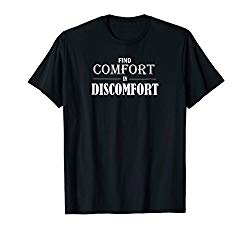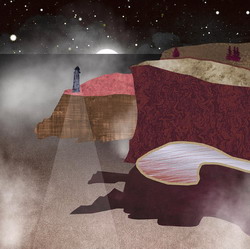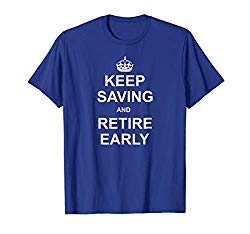Have We Reached Peak Home Bloat?

Everything but a moat….
I was over my buddy Nathan’s house years ago, a massive modern “McMansion style” house in the suburbs of Baltimore. He and his wife Cindy had bought it the previous fall, and this was their first summer in the house.
I was asking Nathan how things were going since the house was a big upgrade from their previous house, which to me was already big. Cindy looked at me and said “When we got our first electric bill after a full month of air conditioning use, I almost cried. It was $720…”.
I know Cindy well and she’s one of my dear friends, she didn’t say it jokingly or without seriousness. She even glanced at Nate afterward briefly as if to say “we have to do something about this now!”
The Numbers
The average floor area of a new house built in 2017 in America was 2660 square feet. After years of steady increase, this number went down slightly in 2016 and 2017. It peaked at 2740 square feet in 2015.
This could be a reflection of the popularity of the minimalist movement and the associated tiny house fad, or it could simply be that we’ve reached “peak house bloat”.
But wait, according to the National Association Of Home Builders new home sizes in early 2018 started creeping back up.
For a data point, in 1951 the average floor area of a new home was 874 square feet. So the average new home in 2015 has more than three times as much floor space as it did in 1951.
While this was going on, how were families in America changing?
Across the globe, a consistent demographic trend is that as a country or population gains wealth and develops, it’s fertility rate declines. There are many reasons for this but it’s not the focus of this post so I won’t dive in.
In America, the average family size in 1951 was 3.34 persons. In 2017, it is now 2.54 persons, almost a full person fewer.
So, we’ve now established that home sizes have increased significantly, while the average number of people per home has shrunk. What does this look like when you get graphy?
I was able to get reliable government data from 1973 to present, and it looks like this:
This graphic is a bit out of date since each person now has over 1000 sq. feet, but I love the illustrative point it makes…
So each person in a household now has more square footage of floor space than the entire family had in 1951, by a good margin.
Fill The Egg You Live In
I realize many would see these numbers and say “So what? We’re wealthier and thus living more comfortably than ever. Should we not progress?” Well, ok. But there are all sorts of things that come with this “progression”. And they have big price tags.
First of all, for the most part people don’t tolerate completely empty rooms. A bigger house means you accumulate more stuff to fill that space. You need to buy more furniture, curtains, carpeting, and home décor for a larger house than a smaller one.
Then there’s the stuff that you’ll pay more for because of size. Your property taxes, utility bills, maintenance costs, and repair work will all be higher with a larger home.
Those high ceilings and huge foyers result in very expensive heating and cooling.
So no surprise, as the average house size has ballooned over time, so has the average American families respective debt.
Housing is of course one of the big three expenses, and the proliferation of oversized houses has no doubt contributed greatly to the rise in debt.
This article from the American Enterprise Institute references some key numbers to consider:
Americans are paying about 70% more today for a median-priced new house on an inflation-adjusted basis compared to a 1973 house, largely because the size of the median house today is larger by almost 1,000 square feet and by 62%. So on an inflation-adjusted basis, Americans are actually paying only slightly more today for a new house on a per square-foot basis ($120) than in 1973 ($114.42)
Bold emphasis is mine. The key there is that the cost per square footage is about the same as it’s always been, we’re just choosing to buy more square footage.
It’s something very important to consider for those who think they can’t afford a home. If you want to see the median sales price per square foot in your state, well I’ve pulled and mapped that data for you.
So if you just consider buying a 1,600 square foot house instead of the median sized 2,600 square foot one, you can use the map above to get an approximation of how much less you would pay. For instance in Virginia the price per square foot is $155. So 1,000 x $155 = $155,000. This is called easy math 🙂
That more modest but still plenty sizable house of 1600 square feet in Virginia would be around $155,000 less. Sooner or later we’re talking about real money.
I wrote a while back about the income gap to affordable housing and discussed the issue of the bloated modern house. Sure, housing seems out of reach for many, but is a 1,600 square foot house or condo out of reach too, or is it just that you think you need a 2,600 square foot house?
Guest Room For Who?
A common trap I see is the perceived need for the dubious and unused guest bedroom. Sure, some people routinely have family or in-laws over and want that extra bedroom to make their guests feel comfortable.
But how many times is that room really being used? Is it sitting unused 90% of the time or more?
Unless you want to AirBnB it out, the guest bedroom for so many American families is a waste. They furnish it with a $2000 bed and dresser drawers and make it look nice, and it maybe gets used 3 or 4 times a year.
Why not just get a futon for your occasional guests? Will they really think that much less of you?
And if they do, are they really your friends?
All of my closest friends have big houses with guest bedrooms, and when I casually asked them they admitted that the only time they go into the room is to dust it.
The pressure to have one of these massive fortresses is so great there’s a whole industry pressuring you to tear down your “small” house and build a 4,000 square foot monster on your lot.
I get these in the mail often (pics of my actual snail-mail).
The top one – 4,052 square feet, 5 bedrooms, 4 baths.
Also notice the top one is ripped in half as I usually tear these up right away and toss them, then I said “wait I could use this in a blog post!”
As Sam from the Financial Samurai said in a recent post, this could assuredly ruin your path to financial independence.
City Living Is Still Smaller
Of note, PropertyShark did this report of median home sizes in the 32 biggest cities in America. According to their report:
Of the 32, only 4 cities rank above the national median in terms of size of homes built between 2010 and 2016 – Orlando, San Antonio, Nashville and Dallas. All of these can boast a median home that spreads over more than 2,600 square feet
But overall big city living requires smaller houses in general. That’s pretty logical, cities are more dense and there’s simply not nearly as much room for modern suburban McMansion style houses.
Here’s a nice little map from the Property Shark article showing the change in new home sizes in major cities in America from the 1910’s to the 2010’s.
Ironically new home sizes actually went down in four major cities as you can see above. But overall sizes have increased substantially.
Going Forward
What does the future hold for home sizes in America? Can they keep going up, even as the average family size will continue to shrink?
The second question is a virtual demographic certainty.
I don’t have the answers, but I would think there has to be a breaking point. With the current new house giving over 1,000 square foot per person on average, how much further can it possibly go?
You may be thinking that you have no control over the size of homes being built, so you’re stuck with having to choose between different models of bloated houses.
As an individual that may be true. But if people start choosing to buy more modest size houses, the builders will respond. That’s how free markets work.
Ford’s recent decision to stop selling cars and only sell SUV’s and trucks shows that the public gets what the public wants.
And if you want to get to financial independence faster, you should think twice about that massive house.

















































Nice post mate! But it’s crazy indeed. And it does not make sense at all to have that much space, you simply don’t need it to live comfortably and happy. Yet, you guys have space, and if you have space it get’s used. That’s totally different on this side of the pond. Not sure what the average living space is, but definitely not a much as you guys have.
P.s. Happy new year to you!
Things are far more sane in Europe for sure, Happy New Year and thanks for stopping by!
Was actually discussing your post with the Mrs last night while watching Tidying Up with Marie Kondo (on Netflix). We also watched Consumed a while back (Canadian show). Both series give a nice insight in how larger home spaces also cause more clutter. It’s easy to not throw things out when you have the space to store them. Albeit hording happens here too, the volume of stuff people have here is definitely less. Increasing home pace of the years probably aggravated the problem for many people. But it does help the US economy 😉
When you put it into graphics it really is striking (the 954 Sq ft per person graph really drove home the point).
Another interesting trend is that the millennials appear to be not as intent with the own your own home dream and instead appear to prefer renting. If large numbers of the population decide that homeownership is not worth it, I wonder what that will do to housing prices in general.
The older generation typically downsize and rents as well so that can be two generations at each extreme that will put downward pressure on home ownership/the housing market.
I think that is a real probability in many markets. Detroit has bulldozed many, many homes over the last few years.
The one counter point is the people that want to own rental properties for income. I suspect that trend will grow, although what those homes look like will likely change. I think the Millennials want more townhouses and properties like that.
Great point, just as with cars we see Millennials taking a different tact on life. So perhaps they will change this trend as they establish families etc.
I think it’s a classic example of people buying what they can afford with no regard to what they actually need. My friend recently upgraded to a house like you mentioned. I’m pretty sure he hasn’t been in all of the rooms yet.
Ha, you should set aside and afternoon to explore his house with him!!
We just bought a house. And it definitely has a guest room. But our in-laws legitimately do come up and stay with us frequently. In fact, the room has been used on three separate weekends in the first two months.
I completely get what you are saying, though, and one of the big things that we wanted in this house was to limit “useless” space like sitting rooms. We use every room in our house (except maybe our dining room, which sits unfurnished until our student loans are gone).
More space makes for more opportunity for kids to disappear and not interact with the family, too. We also wanted to avoid this as much as possible.
Bigger isn’t alwsys better.
TPP
That’s awesome that you have the in-laws in often, more families should stay so close, we’d be better off as a society. So in theory I’m for the guest bedroom, but in practice families don’t stay that connected anymore.
I saw a comedian recently who did a bit that went “I turned the wifi off one day and angry kids came out of rooms I didn’t even know I had…”
Hilarious.
Uh oh. We have one of those infamous guest rooms…..
We have always purchased a home within our means. We also have purchased homes on the smaller size in the neighborhoods we have settled in. The biggest thing is that we do not compare ourselves to others which can lead to house envy.
We have seen a classic example of lifestyle creep when friends bought a big new house in a trendy new neighborhood. They had more rooms which led to more ‘stuff’ that they felt they need to buy to fill the rooms with. Sure it looks nice but they went into significant debt to achieve a short term dream of theirs. I’ll take my little ole’ humble abode all day long!
Humble abodes for the win! Thanks for the great comment
In Florida, we tend to selling bigger new homes. This is because people are moving from states where they have higher incomes (ie. New York) and the prices here are much less than where they are from. We try to talk people out of it, but it normally doesn’t work. Sold a 3600 sq ft home to a couple and their three dogs. He was originally looking at a 2100 sq ft home, but the price per sq ft was “too good of a deal to pass up”. Tried so hard to convince him that a smaller house made sense. He wasn’t having it. *shakes head*
Great read. 🙂
3600 is massive, especially for a retired couple. Maybe they want to be able to hide from each other :/
Possibly. I did hear from another new home consultant that they were looking for a home. They bought the massive house in 2016. Maybe they figured out that five bedrooms, a formal dining room, and an upstairs bonus room was a bit much for two people.
I love the “The McLean Hamlet” – it has “Mc” for “McMansion” right there in the name! And “Hamlet,” wow, that’s a little on the nose, isn’t it? They should just come clean and call it “The McMansion Village.” Selling point: “Show your neighbors how affluent you are, by making your air conditioning bill cost more per month than their entire mortgage!”
Seems like 292 sq ft per person would be more than enough these days. How many square feet does each person really need to sit all alone, not talking to one another, nose glued to their smartphones? Why is it that the more socially and psychologically isolated family members become from one another, the more space they require? That doesn’t seem to add up.
Ha – putting “Mc” in front of anything cheapens it for sure. They’re called that probably because there’s a neighborhood in the DC suburbs named McLean. All areas here are wealthy, but McLean is wealthier than most.
And yes, the isolated family is a growing trend. Phone zombie-ism isn’t limited to the outdoors….
We have a 1900 sq ft home for the 3 of us. We have three bedrooms as we were not sure if we were going to have 1 or 2 kids. That currently spare bedroom is also our computer room – office. The fact is that we really don’t use most of the space in our house. Our dining room – living room is rarely used. We keep it because we are supposed to have one, but in reality its a space we use for a few hours a week. The three bedrooms get the use along with the kitchen and family room. I say all of this in reflection to how this post has me thinking.
We wanted a bigger home, but had a hard limit to what we would spend. The bank suggested we buy more than what we did, but we refused. Most homes in our town are much bigger and more expensive for that reason. As it stands now, especially with regards to heating and cooling, I am very glad not to pay that tax. For anyone else on oil heat, I do swear by my 2 air source heat pumps. Above 40f or so, they are cheaper to run than heating oil.
I have spent time in my friends’ and neighbors’ homes that are larger than mine. Having that extra space is nice. There is no getting away from that. The question is whether its a good way to spend your money. The answer is that its up to the individual, but well, my home is smaller. I lived quite fine in a two bedroom in NYC with my wife that was as big as my current kitchen – livingroom – dining room. I just kept less stuff. When you have more space you tend to keep stuff, just in case…. There is the problem. This all makes me want to go home and throw stuff out!
To me the extra space isn’t always nice. I like cozy, personally. I have my limits of course, I’m not a tiny home person. But to me 2000 sq feet is plenty big for a family. But everyone has their tolerances.
Always enjoy your house posts! The crazy part, at least that I have seen recently, is that it is almost impossible to find a smaller house these days. Everything is either the massive McMansions or if you want something small, you’re looking at an apartment or condo. Trying to find a small stand alone unit is like trying to find Nessie.
I agree it can be hard to get something reasonable. As I mentioned, the public gets what the public wants, so until a majority or at least a significant minority really want smaller homes and vote with their money, things won’t change. That’s capitalism.
Just come to San Francisco. You can spend $1.5M for a 1,600 sqft home no problem 🙂
as you know we have a big house but it cost less than 100k about 18 years ago. we have unused rooms but didn’t really pay to furnish them, unless you count time shopping the curb on large garbage day. we’re unique somewhat in the need for studio space.
you can buy my mom’s old place in hicksville for about 60k right now and that came with a ~1400ft house and 2 car garage in the country. i wouldn’t move back there for all the tea in china but that’s personal preference. who in the hell would we talk to? the cows? i wouldn’t mind a much smaller house with a metal roof.
The studio space is a unique need and you guys get the most out of it. There’s lots of big old houses out there and I’m not for tearing them down, I think many are beautiful and awesome. I love the big cape cod types. I just think there is disconnect when people say “I can’t afford to buy a house” and they refuse to even consider something under 2500 sq feet.
Our house is 2260 sq ft because we added nearly 500 sq ft to it in 1995 to update our old weird kitchen. And then of course, add a huge sun room, laundry and half bath, and…. This was all before my major discovery in 1999 that we could create a path to FI. But we still live there because it is paid for and our property taxes are low-ish because of California Prop 13.
As a result, it would cost us a lot to downsize. Yet the electric/gas bill, the repairs, the furniture, the yard, the…yikes! And also there is the sentimental part. My husband handmade all the cabinets. I designed it all and we built most of it ourselves.
That sentimental part is a major problem with moving (plus the cost of realtors, etc too). My Mom is 85 and trying to stay at her home as she is developing dementia. The home personifies my Dad as he added on to it himself. It’s like he built your graph. The 1955 home of 1100 sq ft became 1600 sq ft in 1973. That sentimentality makes it really hard to make a move, even when the practicality is obviously not there.
Well 2260 is still well under the average, so as usual you and your hubby are winning the game. And it does sound impractical to change with your situation. Plus you need some space for those Taiko drums!
I must admit, with a toddler now, I sure would like another 300 sqft and one full bathroom. Our house is about 1,900 sqft and has 2 bathrooms. Hence, I’m looking. But the property taxes are a killer for expensive homes in SF.
But in Hawaii, prop tax is 1/3rd.. and you get more for your money. Hmmmm.
Our housing cost is 5%-10% of our gross income…. Time to upgrade!
Sam
If you made the upgrade you’d still be well under the average at 2200 sq feet, you should go for it! You’re ahead of the game because you know the numbers and do the research. Most folks it seems just blindly buy as much house as the realtor tells them they can afford. Thanks for stopping by Sam!
Well, I’m definitely one of the culprits that has contributed to San Diego’s increase by 124%. My wife and I went from a 1,000 square foot apartment in downtown to a 3,000 sq ft McMansion in the ritzy ‘burbs.
A few thoughts…
1) Texas lives up to it’s motto. Everything is bigger in Texas, including housing. And it seems to be getting bigger.
2) I wonder why North Dakota has no data. Hmm…
3) More house does indeed equal more to furnish, more to maintain, and more to clean (or pay someone to clean)
In addition to the minimalism and tiny house movement, I think another movement that is on the rise is communal housing and living.
https://www.marketwatch.com/story/millennials-are-lining-up-to-live-in-instagram-worthy-communes-2018-11-21
http://time.com/intentional-communities/
I think as technology and social media continue to progress and become pervasive in our lives, there will be a back lash movement where people will want to live in close-knit communities of communal living.
Multi-generational familial communal living also makes sense where three generations live together under the same roof, but have their own respective space. That way, grandparents can watch over small children while working parents are at work; and at the same time, somebody is close by to watch over elderly grandparents in case something happens.
It’s kind of the norm in cultures outside of the U.S. and Western Europe. And its becoming a movement in Los Angeles too…
https://www.curbed.com/2017/11/21/16682850/multigenerational-homes-millennials-immigration-family
What an awesome comment! North Dakota is a mysterious state, I often find data is missing for ND. I think it’s a celestial black hole on Earth.
And I had a video about this hippy-dippy communal living place that I was going to include, but the post was already very long. But you are correct, I’ve been to alot of countries and all seven continents, and the way we live here in the US is not normal. We take pride in being independent and getting away from our parents and family, while much of the world keeps them close and embraces them. I think they have it right and we have it wrong. The support system of a multi-generational family is huge.
Great comment Doc – thanks!
This hippy-dippy communal living video you speak of… this has me very intrigued…
Here ya go, at your service
Thanks! Very interesting stuff! Sort of on the same topic… I imagine that Mr. Money Mustache will one day expand his MMM HQ and have his own MMM Communal village.
A few random thoughts:
1) I am also at that age where all my family and friends seem to be moving into massive homes. The pressure to make a similar move is similar.
2) It has always been weird to me that basements are not included in sq footage in many areas. We live in a 1,500 sq ft house, but have a finished basement which adds an additional 1,000 sq ft or so. I do think 1,500 sq ft would be a little tight with a family of 4 though with a basement it’s not an issue.
3) I also think this will self correct at some point. Younger generations are more worried about flexibility and location than the massive house that requires an hour long commute. Maybe that changes as the younger generation becomes the older generation, but I’m not sure how much bigger these houses can get.
Basements are included in many areas, it depends. For instance I have a finished basement (mostly) and all the major sites have it included in my sq ft numbers. i think there’s a concerted effort to fix that with the MLS system and the big companies like Zillow & Redfin etc.
I agree it may self correct. The Millennials seem to be bucking many trends, but like you said will they change when they get old and crusty? We’ll see.
Yeah, depends on the state I think. I’m in Missouri and basements are never included, but only a few miles across the river in Illinois finished basements are included in sq ft. I’m sure it will all be consistent at some point.
My sister and her family (spouse + 3 kids) live in a 1500 sq ft house and seem to do fine. They do have a basement but it is only usable as storage (low ceilings, prone to flooding). The layout of a home can make a big difference as to how comfortable it is for people/sqft. They have 4 bedrooms and 2 full bathrooms with a large kitchen, formal dining room and entry that can double as a sitting room or office. I have a 1200 sqft home with an attic that could be used as a family room after heat/insulation/outlets are added. I really loved our old rental that was 950 and think it was plenty big.
I’m a little worried about the future as we (Americans) seem to have shifted in our need for space. It’s a bit of hedonistic adaptation where what we have becomes normal and anything less is a struggle. Like transportation, it might only change when it becomes too expensive. If gas were more expensive here, Americans would drive smaller more efficient cars but it’s cheap so they don’t care.
My neighborhood is all 1500 sq ft houses and many have kids. They’re doing just fine, and probably closer as a family.
You’re correct about gas prices and driving miles, those 2 things go in sympatico. But I don’t know what will change the big house trend.
Our last home was over 4,000 square feet and over 10 years we did manage to fill it all up. We downsized in space to be in a nicer location and now have 2,500 square feet. The only room I miss is the guest room. Although it wasn’t used much, it made my 80 year old dad much more comfortable when he’d come to visit and he enjoyed the ensuite bathroom. My husband on the other hand misses his “man cave” since we no longer have a basement. So the next house might be somewhere in between.
You took away the man cave! Well, someone’s gonna have to adjust
This post summarizes inklings I’ve been hearing here and there on the internet. Thanks for putting in the hard work to get everything all in one place! I also like your coined term “peak house bloat.” It frames big houses as something not exactly appealing. It will be interesting (and probably sad) to think about what all of these structures will look like in 20+ years. They aren’t built that sturdy either, so I bet some people will be having a lot of problems with them or avoiding them altogether.
I was pleased to see the average cost per square foot in Iowa and know we got far below that when we bought both of our houses! That feels good (and it’s a very interesting map I’d love to show some friends). Nice work.
I have some architect friends and they joke about how these modern houses are built. They claim that they’re intentionally built pretty shabby to assure they’ll need to be torn down and redone in 30 – 40 years. Kind of like a conspiracy theory of the building industry. Not sure if I believe in the conspiracy, but the homes are indeed often very poorly built.
Interesting to see Seattle didn’t grow that significantly, but I have a feeling that has more to do with condos and the like. Since the cost of land is so freaking expensive these days, most new homes for sale are actually in the 3000 – 4500 sf range because the builder has to get a return that makes sense (and even then the margin is getting squeezed). Unfortunately, that reality is a large part of why “missing middle” housing is such a hot topic right now.
The condo market up your way has probably gone bonkers with Amazon. Ours is arguably already bonkers, but with Amazon adding all the new jobs here it’ll probably get worse. But then again, when you have these employees averaging salaries of $150k, they’ll likely buy them.
Actually the condo market is bonkers, but not in the way you’d expect. The state law is such that anyone who builds condos WILL be sued and so the only developers who build any these days (very very very few) are only the ULTRA luxury because they have the funds to pay out the lawsuits.
I’ve blogged a little about the housing boom in Australia. The trend in housing is similar to the US – new homes are HUGE, often 2 storeys, especially as housing blocks of land are getting smaller.
In my old suburb, before I geo-arbitraged and moved – the trend was for townhouses/duplexes… now going up to 3 storeys tall. The one I had designed for my old block – my original 1950’s house was 12 squares. The new townhouses that are now on that block total over 60 squares. Crazy.
Wow, very interesting about Australia. I haven’t been since 2008 and don’t know much about the trends – thanks!
Much like the fabled “optimal income” graph that shows that happiness increases up to a point with income but then flattens (or declines), I suspect there’s something like that for house sizes.
700 sq ft probably leads to greater utility than 300 sq ft and maybe 1500 sq feet leads to even more utility. But maybe after XXX sq ft utility actually flattens. Maybe there should be graphs plotting house sizes with residents self reported happiness levels one year after living there. And control for other issues that impact happiness like health etc.
That would be very cool to see! My guess is the sweet spot would be around 1500 – 1700 sq feet. Maybe I’m biased because my house is 1450sq ft., but I think that’s a decent enough sized house, but that still has a somewhat “cozy” feel.
One thing I wish home designers paid more attention to is using space efficiently. We have a 2250 sqft four bedroom home in which all the rooms are just the wrong dimensions and laid out in slightly strange ways. It’s enough for the five of us, but I could live in a smaller home, and feel as it were bigger, if the layout were better. And I agree. I like a cozy home, but I also need a niche to get away from everyone 🙂
Good design is everything, my architect friends always remind me.
I find this interesting in terms of dual income households. It seems like dual income lifestyles led to dual income spending, and part of that is the larger house. But I often hear rumbling about how moms want to quit, but can’t because you just can’t afford it anymore. My stance has always been that you “can’t afford it” because your standards are out of line. Our grandparents didn’t make more money than us, they simply had smaller houses and more modest desires.
So true. There’s some great posts out there that run #’s on the whole dual income thing, and it turns out that in some circumstances the extra money is canceled by the extra car, long commute, bigger house, and of course day care expenses.
Exactly. That’s why I tell people when they complain about how the middle class is struggling. I don’t doubt that some of the middle class is legitimately struggling, but our definition of what middle class should have has changed substantially.
This is probably the one major sticking point with my wife. I feel like spending money on real estate that you live in is waste, She feels that it is very worthwhile.
I’m mostly with you but there’s nuance…
One of the dumbest things I ever said was “the McMansion is dead” in 2010. Lived in Georgia and there were unfinished subdivisions everywhere (pipe farms!). Nine years later the McMansion is alive and well.
That infamous “guest” room is still our downfall. It’s also difficult to get newer house in the 1800sqft range.
Laughed at the electric bill, will always remember my first $350 one when I went up to 2800sqft at 25!
Ouch, $350 is still a lot!
I’m skeptical that home bloat is peaking. Construction is easier than ever. Getting loans is easier than ever. Population is still growing. Why not get more space, if we can?
My real estate brother in law says that *space* solves a lot of problems. Get more square footage, and we can figure the rest out. I’m partial to this view.
On the other hand, economic literature indicates that the size of the home is something we quickly adapt to — so is it really bringing us more happiness? Unclear.
Anyway, great stuff! Love the writing.
– DeForest
Everyone believes in human-caused climate change and everyone wants to keep making homes bigger (and SUVs). Hmmmm
For sure — bigger homes aren’t helpful for the environment. There’s good research that energy consumption and emissions per person are lowest in cities. Another good reason to live small!
Yes they are indeed
I’m not going to lie, some of those McMansions are super appealing, but I’ve largely been against them for the environmental and health impact alone. So much of the beautiful farm and wooded land we had outside Philadelphia has been turned into McMansion-land, causing increased traffic congestion and longer commutes. They were never planned to be walkable or convenient to grocery stores, etc., so people spend even more time behind the wheel, often in gas-guzzling SUVs, to get anywhere. I often wonder how much pollution those poorly planned communities have indirectly caused. And, as others have said, many are very poorly constructed, which will lead to constant repairs or their eventual demolition. My brother used to run electrical work through new construction and has routinely noted that many of the ones in our area (and I’m sure other areas) are easy to break into. He said pull off some siding and slice through the Tyvek with a knife and that’s it. That’s an incredible security risk!
The other issue is obviously money. Your friends are literally throwing money away on that $720 air conditioning bill (while simultaneously damaging the environment). It’s like they’re trading their retirement for cool air! I remember during the housing boom in the 2000s that so many of the McMansions I visited had little furniture and no window coverings because people had no money leftover after the mortgage payments. They underestimated how much custom window coverings would cost because no one was making anything for those gigantic great room windows at the time.
I don’t think most people think about what all comes with the house once they’ve bought it: the higher maintanence costs, higher heating and cooling costs, higher taxes, the cost of furnishing the home, and even the pressure to have the right car parked in the driveway — all stuff straight out of “The Millionnaire Next Door.” Sure, they can look impressive, but the trade off isn’t worth it.
They are indeed money pits, and bad for the environment as you clearly state. But most folks claim they care about the environment and believe in human caused climate change. They don’t behave according to their beliefs.
Yeah, kind of like many of my neighbors who can’t figure out how to secure their garbage and recyclables, then they complain that our neighborhood is covered in litter. Hmm…
I didn’t read through all of your comments so I apologize if this was already posted, but one reason for moving to a larger home is that larger homes often result in better school districts and thus better education for your children. My husband and I are currently shelling out a significant amount of money for private school in order to avoid a subpar school in our area. We live in a three bedroom, modest home, but we have considered moving into a bigger home, not because we need the space, but because we could move into a better school district and skip the pricey private school tuition.
That’s interesting and no one mentioned that. It sucks that you have no choice but a huge house in a good school district. We need to demand more reasonably sized houses by voting with our wallets
Big houses scare me and even did when I made serious money in the 6 digits, small is just so god damn awesome. I love that you led off the conversation with the cost of ownership with the things we buy, big houses come with big ownership costs. Do they count condos in those house numbers in the big cities? That could be where the square footage drop is coming from? Great number crunching as always in your articles
They do use big houses in horror movies, so maybe that’s why 😉
I believe condos were counted in that data, it was just floor area per dwelling. Cities just generally don’t have as much lot space, especially those on the east coast that are older. Thanks Chris!
Surprised you focused so much on the finances and so little on the environmental issues. At any rate, good food for thought as we plan the expansion/renovation of our mansion to a palace.
Well you can certainly afford to expand, my main point was to expose how regular people are penalizing their ability to grow their net worth because of their house size. And this is ‘mostly’ a financial blog, so that gets the attention over the environmental aspect. Although the majority of Americans believe one thing about climate change, but behave in ways that contribute to climate change (according to their own beliefs) when they have clear alternative choices. I think there’s a word that begins with “h” to describe that behavior….
Thanks for stopping by Jim!
One issue with the per square foot price math is that the price per square foot tends to go up as the house gets smaller. We are currently casually looking for a retirement house, and I would like a smaller home but am finding that to get the neighborhood & home amenities I want I will probably buy a bigger house than I want.
Interesting, I’m wondering if that’s something local to your area. I’m not sure it’s universal but I’d have to dig into that. Thanks for the comment!
Thank you for the excellent article and I really like the graphs.
Our family of four moved from a 3 bedroom 1469 sq ft home to a 4 bedroom 2730 sq ft home when our twins turned 10. Our reason was that we had “outgrown” our house and we found a better neighborhood with a better drive to work. Fast forward 18 years and we now have 2 guest rooms. It seems that one guest room always got use so it was a good fit. But then we hit a spell of a year or so when neither guest room was used. I retired early 3 years ago at age 55 and I thought about downsizing, but it would be a sideways move from a cost view once I factor in repairs, realtor and moving costs. (But I would save going forward.) Then something changed this past year. My son and family moved in for a few months while they had their new home built. Then a few times, I had family passing through stay overnight. Now sometimes the grandchildren spend the night on a weekend. So it is hard to gauge what space you really need.
You can be frugal in filling your house. Rather than buy beds, I bought a table saw and I built the beds myself for two bedrooms. After the children outgrew the bunk beds and loft, I swapped them with a church member for one of their beds. I have two night stands and a barbecue grill that I picked up off the curb from neighbors tossing them out. I have actually passed on perfectly good desks and bookshelves being tossed out because I have plenty. I recently put a pet carrier out to the curb for trash pickup and within 30 minutes someone had stopped and taken it. So I guess I am not the only frugal neighbor.
I live in the suburbs of the Katy/Houston Texas area and I ride my bike around several times a week for exercise. For the past decade I have seen a lot of new houses being built in my neighborhood and nearby ones. Most are similar to my neighborhood with one or two stories and 3 or 4 bedrooms. The houses seem to be closer together than prior decades. All the empty land seems to be getting used. It seems like a great expansion. From what I read, Texas has some of the largest growing populations.
Great job on DIY furnishing, that is a much better way to furnish a house. Plus you build skills.
I bought my family home in 2015 that was around 2400sqft. Moved away to a 700sqft apartment and now rent out the home!
I’m finally seeing a trend in PA of newer small homes being built. I’ve mainly seen it around Lancaster PA. I wonder if more people would be smaller homes if they were new. Typically smaller homes are old and outdated. People can’t afford to remodel them, but can squeeze the cost of a bigger house in their mortgage. (sigh). I wonder if the “fixer upper” mortgages will ever catch wind for people who actually will stay in the home. (I don’t know about these)
Good point about smaller homes being older. But we’ve done that to ourselves because we haven’t demanded new ones. Maybe it could change over time.
Beautiful graphics with a nice zing, Dave. I like to project my finance fantasies out about ten years, and my current one (as someone residing in a dark blue state on the US map) is to downsize appropriately as soon as the kids are out of the house and invest the difference to sustain several years of slow travel interspersed with time at home.
Thanks for the additional brain fodder,
CD
Sounds like you have a great plan in place Doc, and thanks for the kudos!
We bought our Arlington VA home way back in 1998. My small 2004 sedan fits nicely in the garage but anything bigger would be a squeeze. The newer McMansions I see in the area have upsized 3 car garages to fit the jumbo trucks and SUVs folks are still buying. Due to the price of land the houses now take up the whole lot. It’s like they forgot about the back yard. I think a lot of people are getting larger as well. Maybe we have reached peak bloat! For a good laugh check out McMansionhell.com
The McMansion craze going on in our area is out of control. Houses are being leveled everywhere for these monstrosities. I’m sure most of the folks doing this will never retire or retire very late in life with no health left, and regret it.
If you go by the cencus house size is on a downward trend (https://www.census.gov/construction/nrc/pdf/quarterly_starts_completions.pdf) and Financial Samurai did a bit on it recently too!
I for one wish I had more space. I have a small house and there is no where to put any excess stuff like tools. Maybe I just need less stuff…oh boy…this is a rabbit hole I’m going down.
“Honey we are going to need a lot of garbage bags!”
Yeah it trended down, then back up, then back down again. It’s wavering, meaning hopefully we have reached the peak and people see the absurdity of the size in general.
Ha – like the line from the movie Jaws. “We’re gonna need a bigger house…”